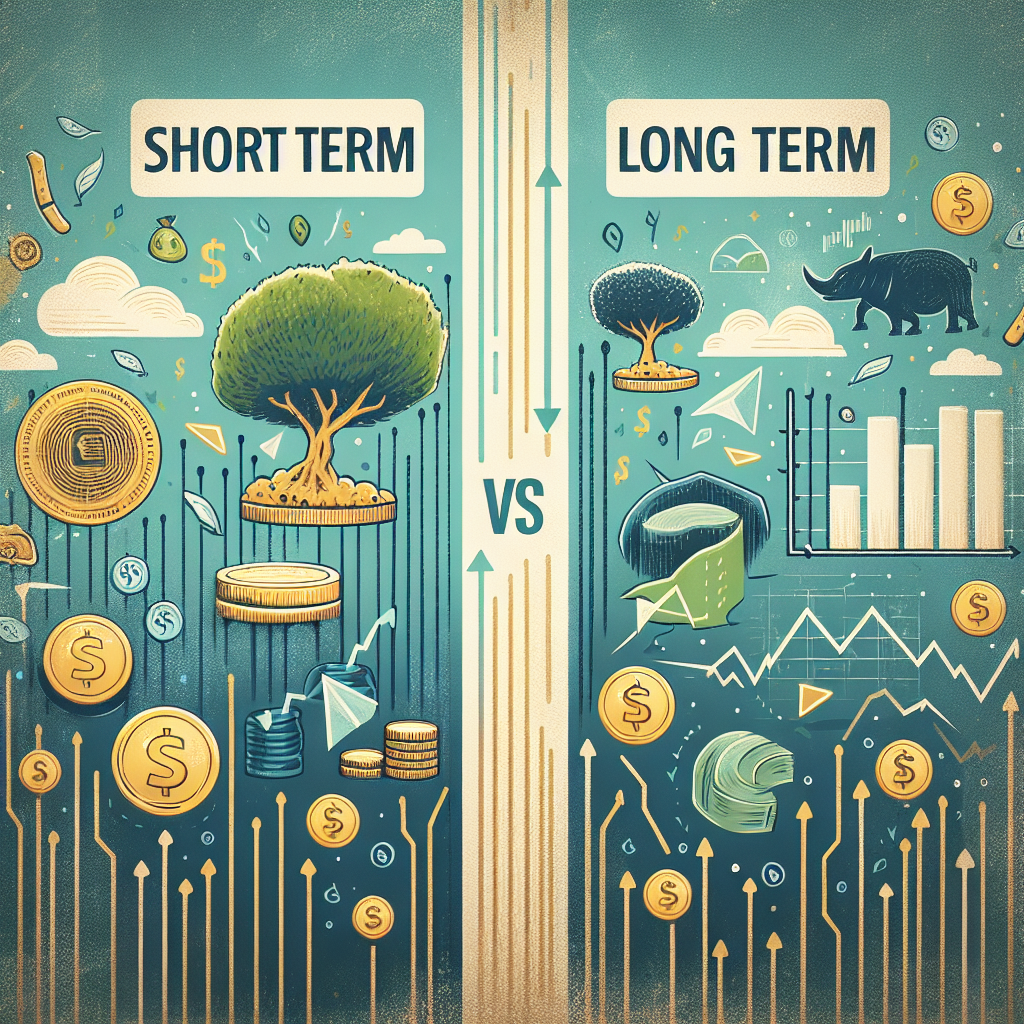Investing is a critical aspect of wealth-building and financial planning, with various strategies available to suit different financial goals. Among these strategies, long-term and short-term investing stand out as two distinct approaches. Understanding the differences, benefits, and drawbacks of both can help you make informed decisions that align with your financial objectives. In this article, we’ll take a closer look at long-term vs. short-term investing.
What is Long-Term Investing?
Long-term investing refers to the practice of buying and holding assets for an extended period—often years or even decades. This strategy is built on the foundation of patience and research, aiming for substantial growth and compounding returns over time.
Benefits of Long-Term Investing
-
Compounding Returns: One of the primary advantages of long-term investing is the power of compounding. The returns earned can be reinvested, leading to exponential growth over time.
-
Reduced Volatility: Long-term investors are generally less affected by short-term market fluctuations. History shows that markets tend to rise over the long run, making it easier to weather the storms of volatility.
-
Lower Transaction Costs: Fewer trades mean lower brokerage fees, which can eat into returns. Long-term investing minimizes these costs and enhances overall profitability.
- Tax Efficiency: Long-term capital gains tax rates are often lower than short-term rates, making it more tax-efficient for those who hold investments for over a year.
What is Short-Term Investing?
Short-term investing involves purchasing securities with the intention of holding them for a brief period, ranging from days to a few months. This strategy often revolves around profiting from price movements and market trends.
Benefits of Short-Term Investing
-
Quick Gains: Short-term investors can capitalize on rapid market changes, taking advantage of price fluctuations to generate returns quickly.
-
Flexibility: A short-term approach allows investors to adapt to changing market conditions and seize emerging opportunities.
-
Active Management: Short-term investing appeals to those who enjoy actively managing their investments and making strategic decisions based on real-time data.
- Liquidity: Short-term investments are usually in more liquid assets, allowing for quicker access to cash when needed.
Key Differences Between Long-Term and Short-Term Investing
Time Horizon
- Long-Term Investing: Focuses on years or decades.
- Short-Term Investing: Focuses on days to months.
Risk Tolerance
- Long-Term Investing: Generally involves higher risk tolerance with less concern over volatility.
- Short-Term Investing: Requires lower risk tolerance, as price fluctuations can lead to significant losses in a short timeframe.
Goals and Objectives
- Long-Term Investing: Aims for capital appreciation and wealth accumulation over time.
- Short-Term Investing: Focuses on quick profits, often utilizing market trends.
Choosing the Right Strategy for You
Determining whether long-term or short-term investing is best for you depends on various factors, including your financial goals, risk tolerance, investment horizon, and personal circumstances.
Assess Your Financial Goals
Before deciding on an investment strategy, it’s essential to define your financial goals. Are you saving for retirement, a house, or a child’s education? If you have a long-term goal, a long-term investment strategy may be more suitable.
Evaluate Your Risk Tolerance
Understanding how much risk you are willing to take is crucial. If short-term market volatility makes you uncomfortable, long-term investing might be the better choice for peace of mind.
Consider Your Time Commitment
Short-term investing requires more active engagement and research. If you don’t have the time or inclination to monitor markets frequently, a long-term strategy could be more fitting.
Final Thoughts: Striking a Balance
Ultimately, the best investment strategy may not be solely long-term or short-term. Many successful investors often blend both approaches to create a diversified portfolio that aligns with their financial goals. In doing so, they harness the benefits of both strategies, balancing risk and return effectively.
A comprehensive understanding of long-term vs. short-term investing can empower you to take control of your financial future. Whether you choose one strategy over the other or a combination of both, the key is to stay informed, remain disciplined, and adapt your approach as needed.
By thoroughly understanding the fundamentals of long-term and short-term investing, you can make smarter decisions that pave the way for achieving your financial dreams. Start today by assessing your goals, evaluating your risk, and crafting the right investment strategy tailored to you.

